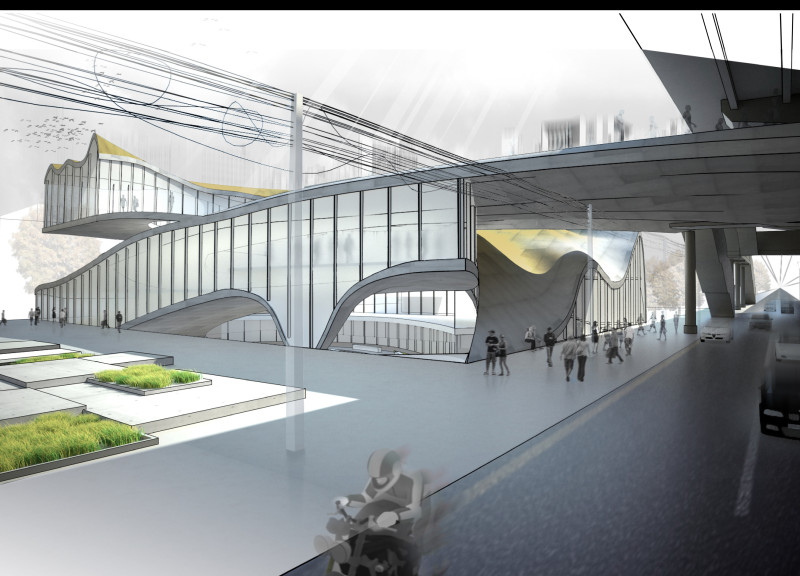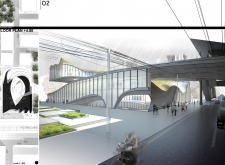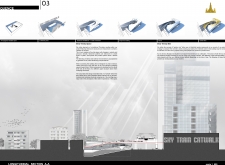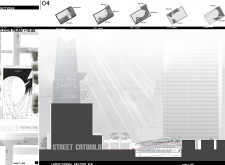5 key facts about this project
### Overview
The Bangkok Fashion Hub is located in the vibrant city of Bangkok, Thailand, and seeks to integrate modern architectural practices with elements of traditional Thai design. The project's intent is to create a functional space that embodies the concept of "slow trends," reflecting the evolving nature of fashion while grounding itself in local cultural identity.
### Spatial Organization and User Engagement
The architectural composition features a dynamic arrangement of public, semi-private, and private spaces characterized by fluid forms and asymmetrical configurations. Notable design features include the "Sky Train Catwalk," an elevated walkway that connects various levels of the hub, facilitating both movement and interaction among visitors. This innovative layout fosters diverse user experiences, allowing individuals to navigate from bustling exhibition areas to quieter lounge spaces, enhancing engagement throughout the facility.
### Material Selection and Aesthetic Approach
The material palette of the Bangkok Fashion Hub incorporates a variety of elements that reflect both modernity and tradition. Extensive use of glass allows for transparency and natural light while merging interior and exterior environments. Concrete provides structural integrity and a raw aesthetic, complemented by metal accents that enhance durability. Golden tiles, reminiscent of traditional temple roofs, create reflective surfaces that engage light and color, while natural stone is utilized for paved areas to enhance tactile experiences within the surrounding landscape. The integration of greenery and open spaces throughout the site promotes environmental sustainability while softening the urban context.





















































